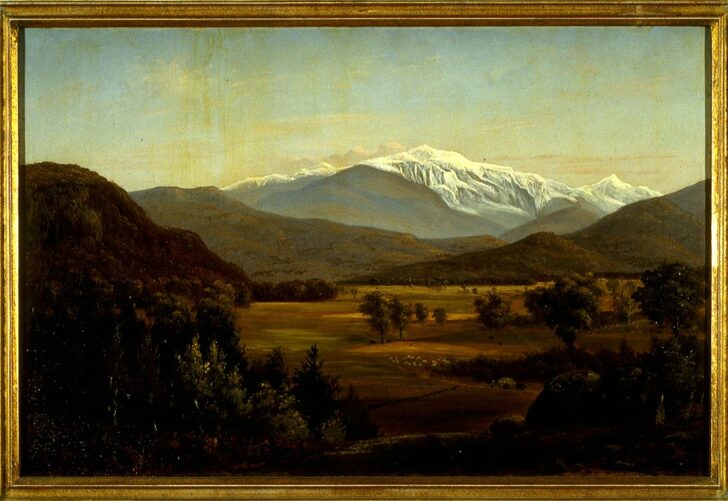White Mountains in September, North Conway, New Hampshire
Sylvester Phelps Hodgdon

Description
March 28, 2009
During the nineteenth century, the White Mountains of New Hampshire stirred the imagination of many Americans. The region became famous after the Willey Family tragedy in 1826, in which nine people lost their lives in an avalanche caused by mudslides; their home was left standing when they hastily fled, and an open bible was found inside on a table. This poignant event became a subject in literature, art, and scientific journals, reinforcing contemporary notions of the country’s dramatic and untamed mountain wildernesses. The White Mountains subsequently grew to be a major tourist attraction and a magnet for artists. Mt. Washington, a 6,228-foot peak named after the first president of the United States, was one of the highlights of the region. It was one of the most recognizable places in America after John Kensett exhibited a painting of it in 1851 that was reproduced as a lithograph and distributed to more than 13,000 people. In Hodgdon’s view of this iconic site, the forbidding mountain looms over the domesticated valley below, populated only by a small haywain and some sheep. He often set up dramatic contrasts between dark and light in his paintings, as here, and this autumn scene allowed him also to capture the transition from summer to winter.
Subject Matter:
“White Mountains” was a popular subject amongst 19th century Americans, who, stirred by the doctrine of Manifest Destiny, wanted patriotic emblems of an optimistic and expanding nation. Using the popular tenets of the sublime and the picturesque, Hodgdon juxtaposes an awe-inspiring snow-capped mountain in the distance with a lush valley just beginning to show evidence of a fading summer.
Physical Description:
Landscape with trees in foreground, valley in middle ground dotted with minute figures of sheep and a farmer with a team of oxen pulling well-filled haywain. Mountains in distance with a snow-capped mountain in center background.
Usage Rights:
If you are interested in using an image for a publication, please visit https://umma.umich.edu/request-image/ for more information and to fill out the online Image Rights and Reproductions Request Form.